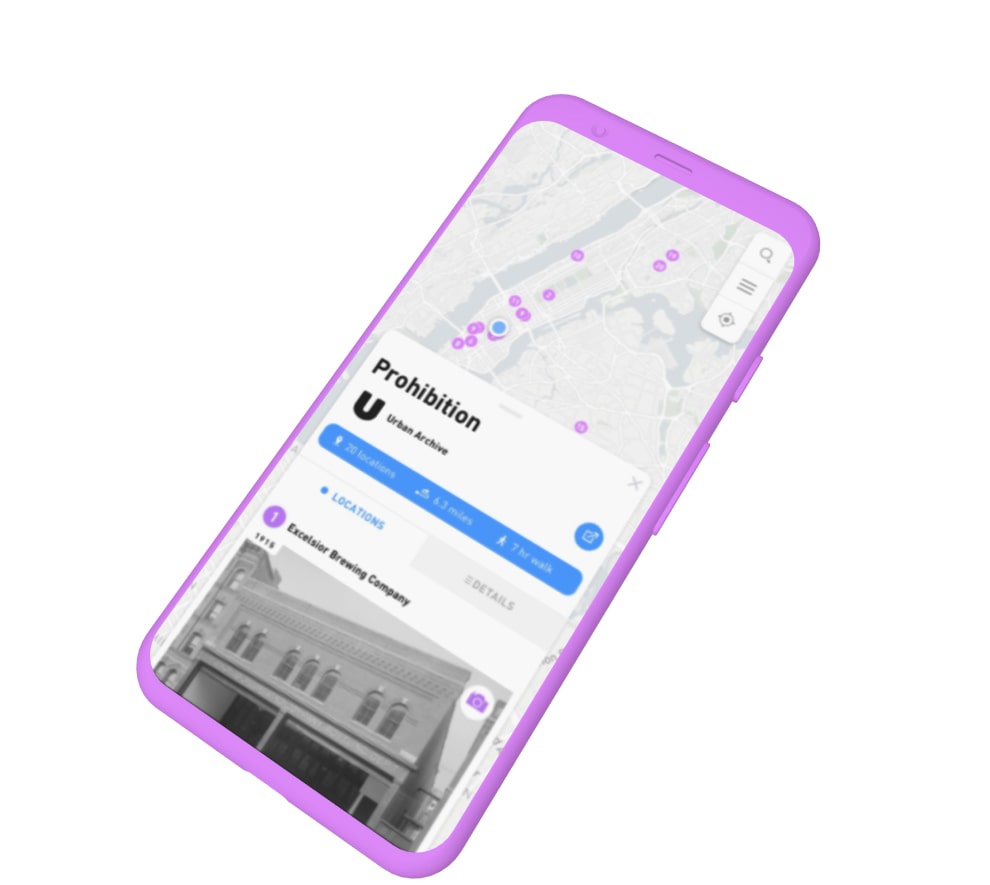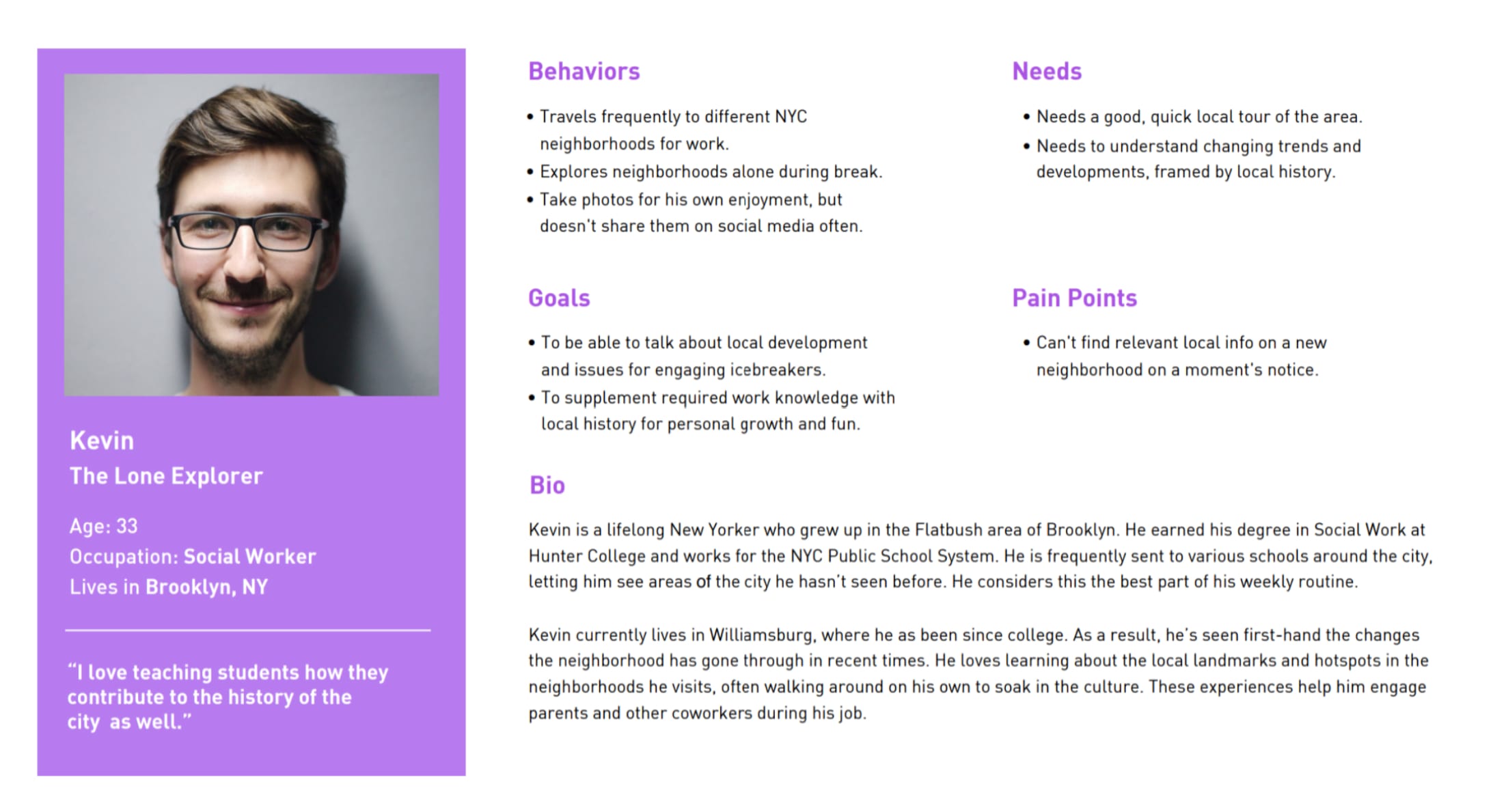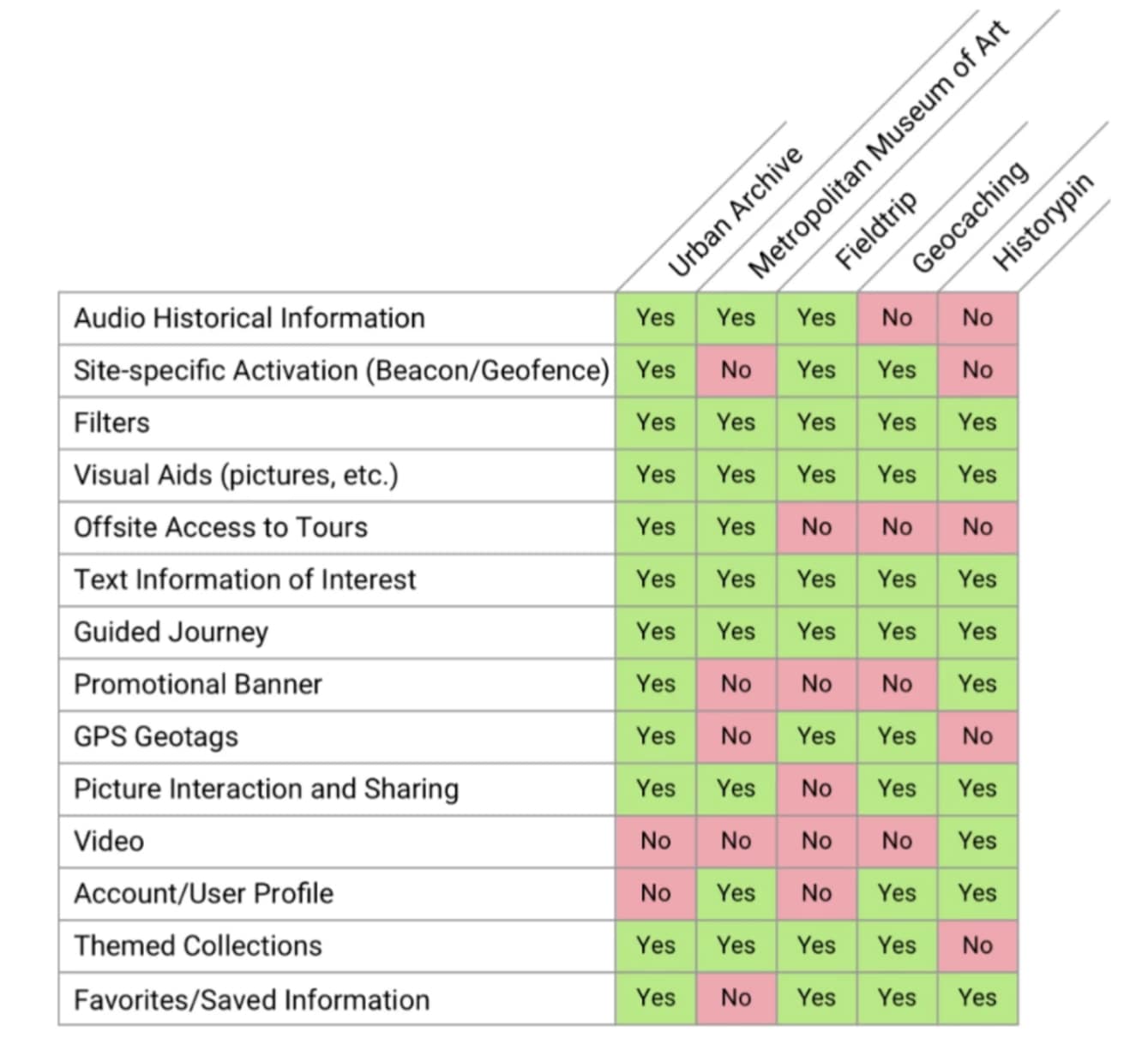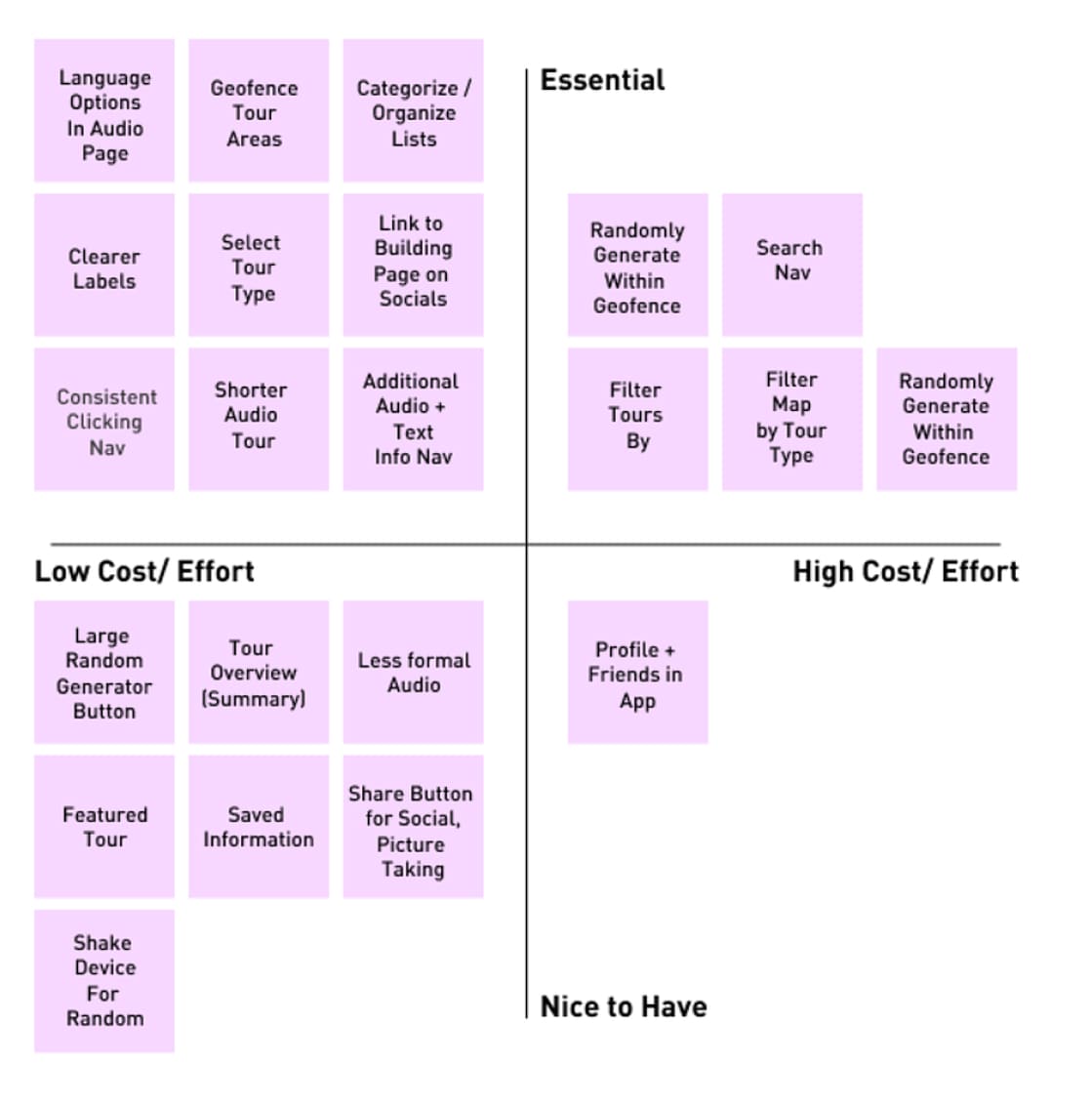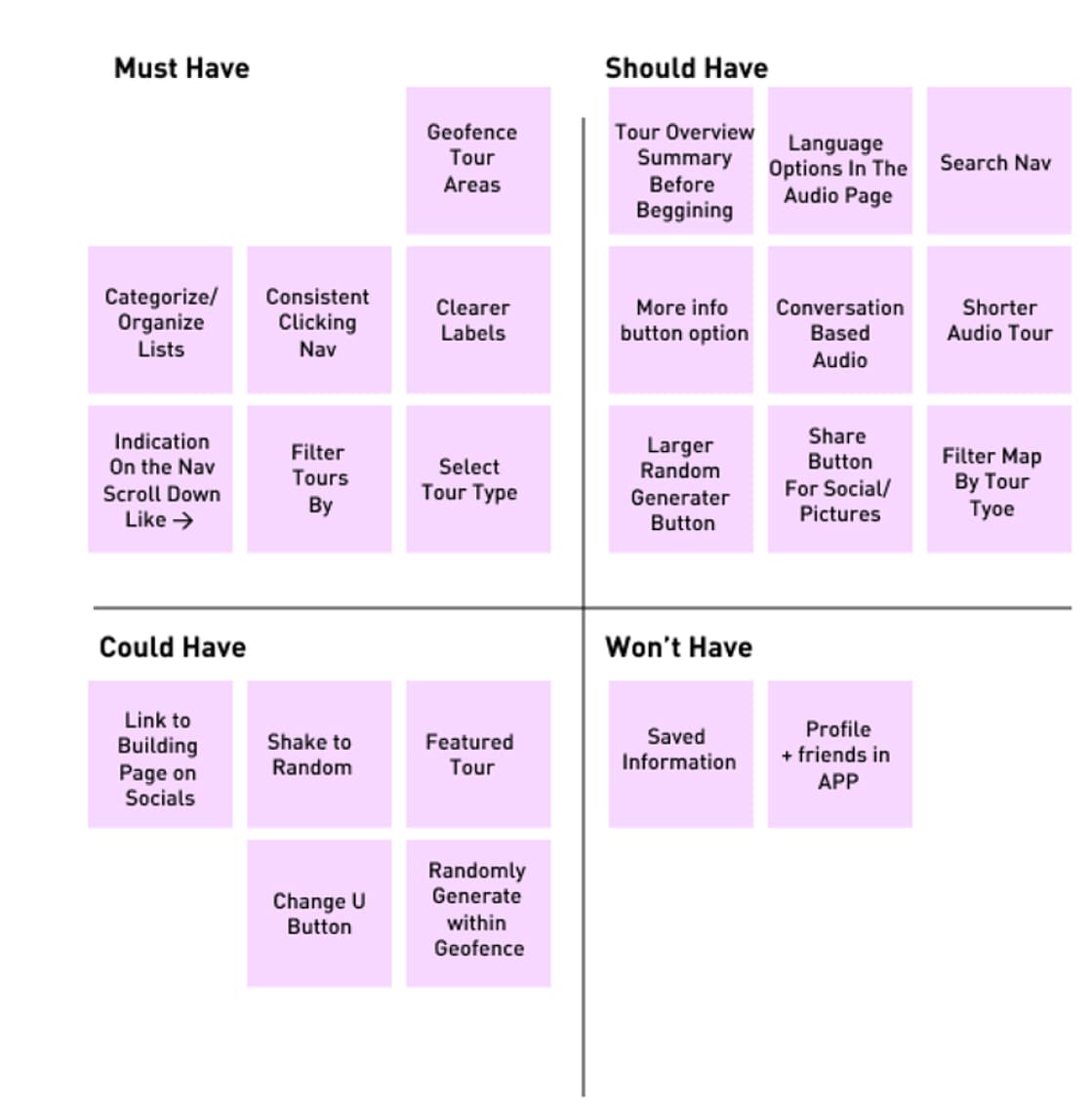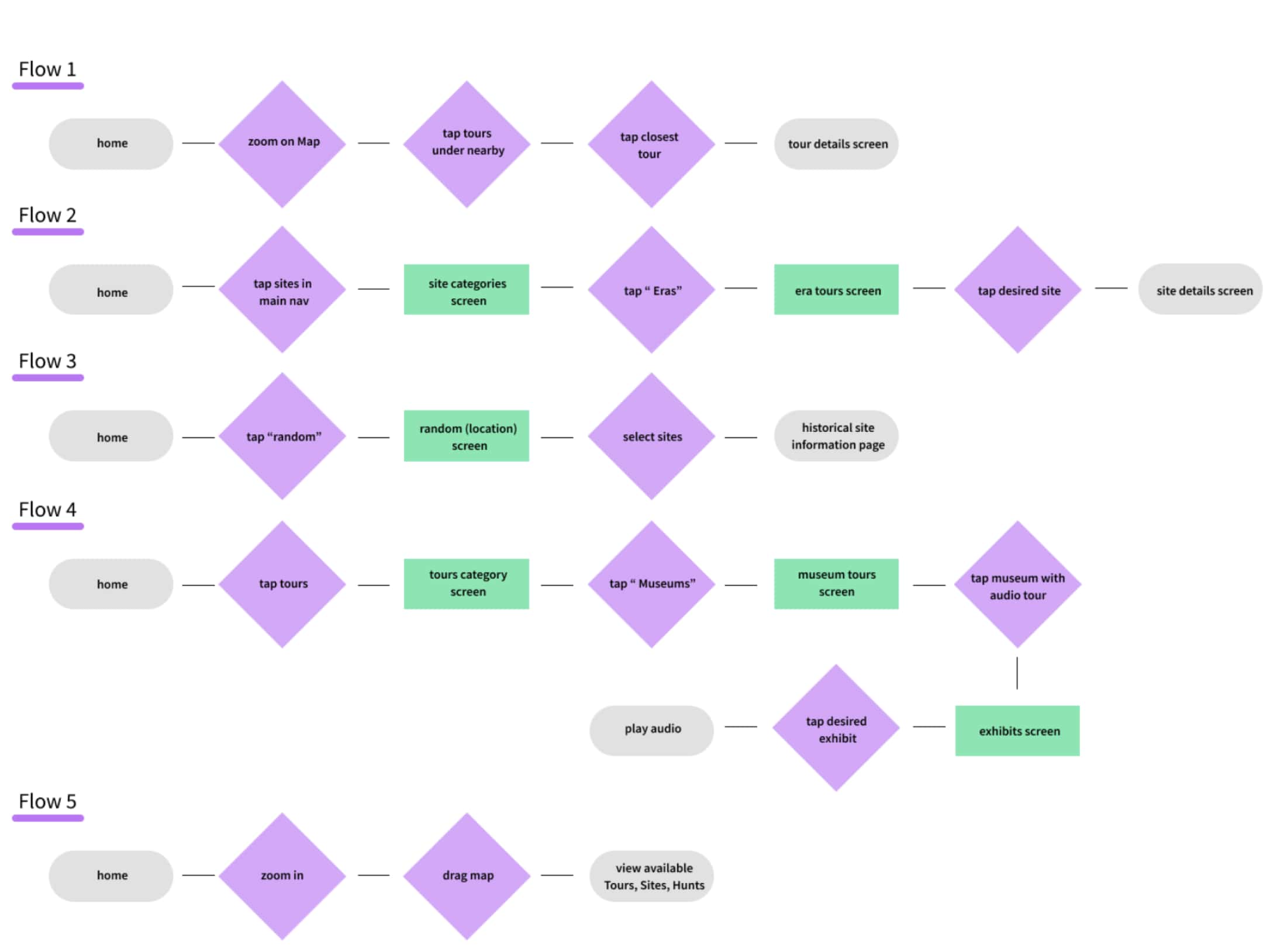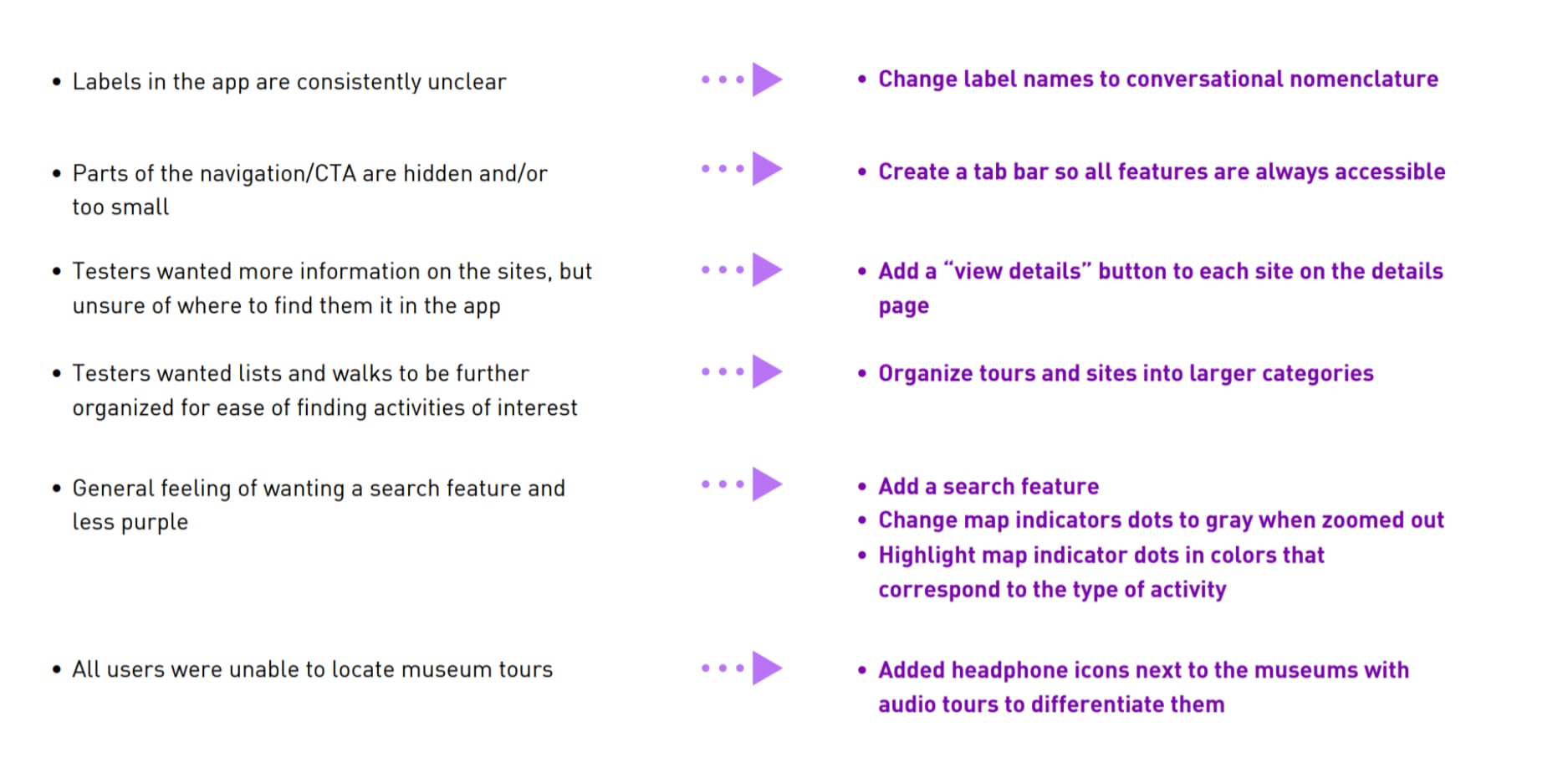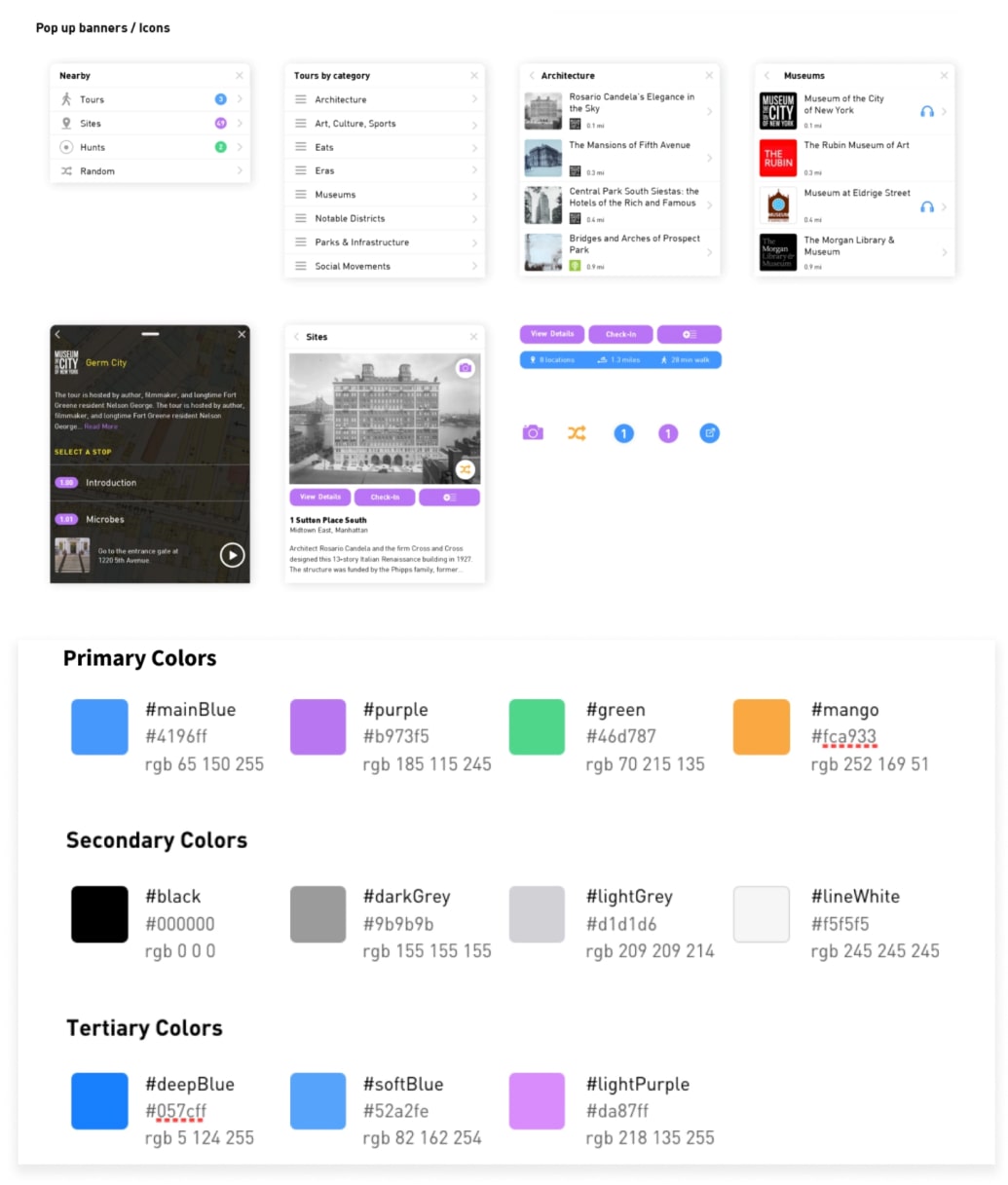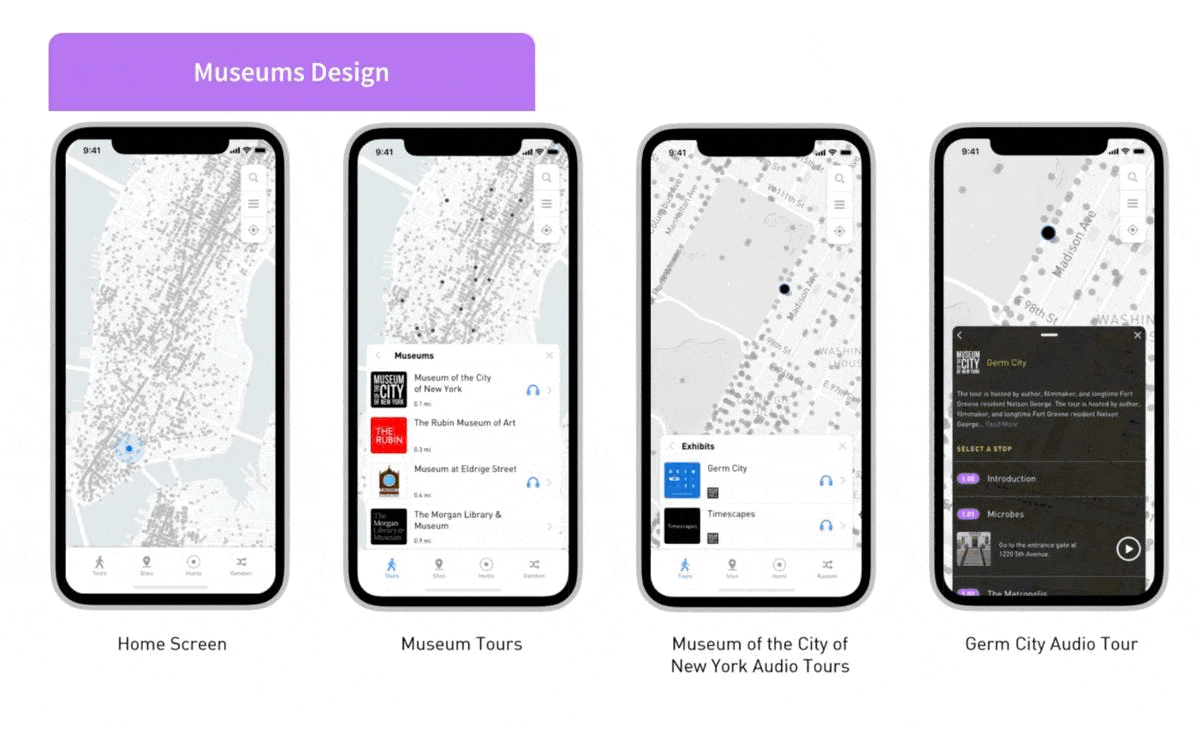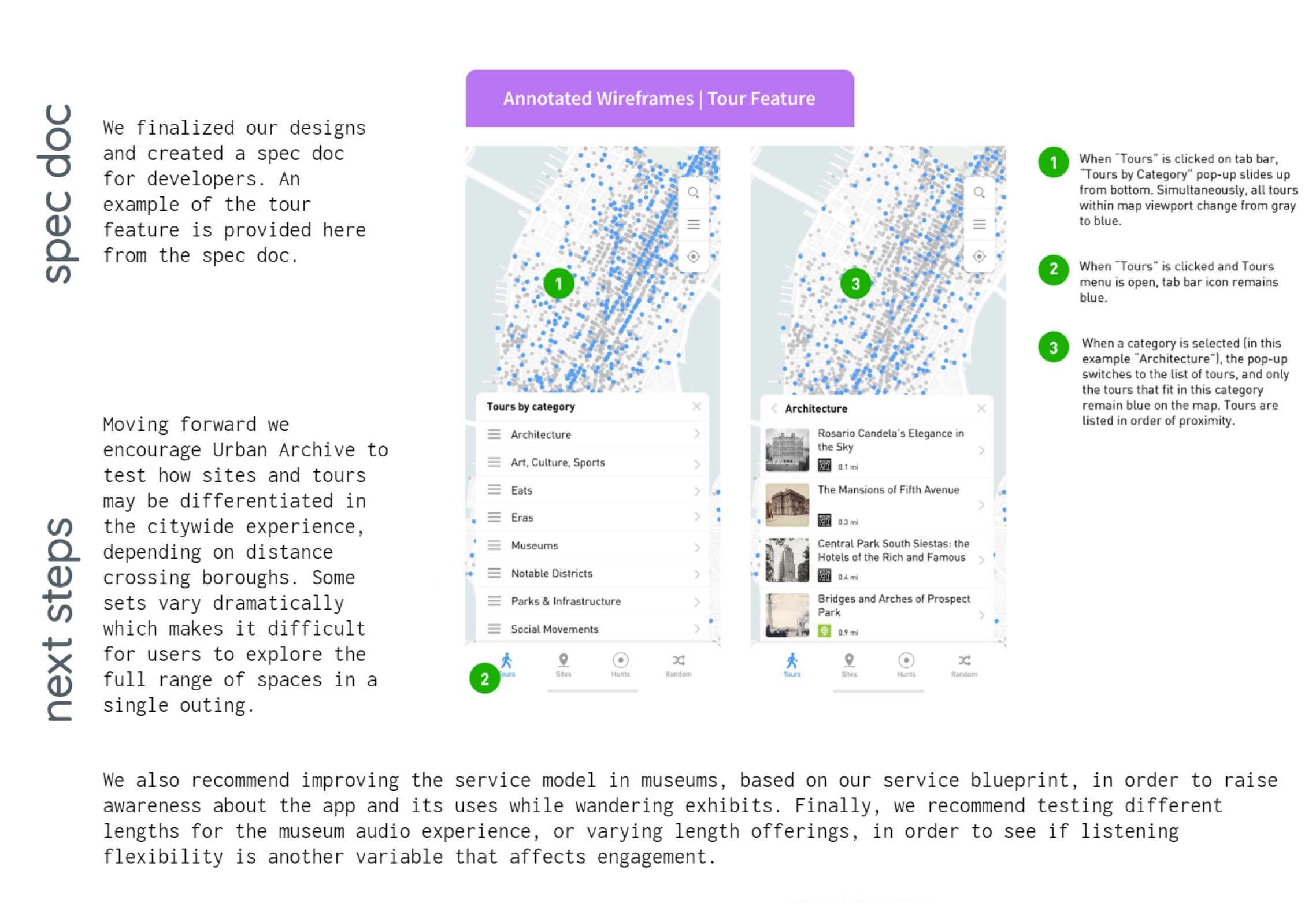Revised Problem Statement
New Yorkers experience the growth and evolution of their city firsthand. Many wish to learn about the city's history for their own personal development or social engagement, but in an authentic and accessible way. Common roadblocks when engaging in a museum or walking tour include limited time, lack of control over the experience, or language barriers...
How might we construct a consistent self-guided tour experience about the history and evolution of NYC, for people who value exploration as a social activity or solo endeavor?
